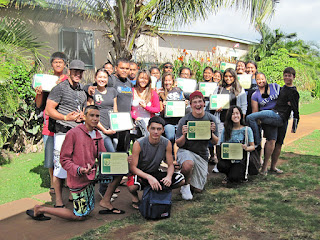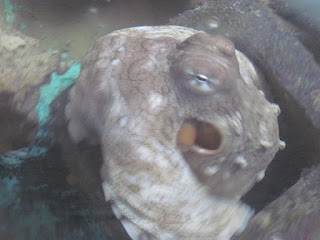On our last day of the program, we met with civil engineers from the City and County of Honolulu's Environmental Services Division to learn about non-point source pollution and how to prevent it.
Ping Quidica of the City explained how non-point source pollution gets into our ocean -- basically whatever comes from land that enters the storm drains drains into the ocean, untreated. That's not good for the ocean or for our own health! Part of the problem is that many people don't realize that storm drains lead straight to the ocean. Education is needed!
We donned our safety gear and went through the Kapolei community to spray stenciled messages above storm drains with a clear and simple message. In less than two hours, we stenciled more than 90 storm drains!
Go team 'o'opu!
After we got back to the classroom, we heard a great presentation by Auli'i Silva of LCC about choosing colleges and paying for college. She gave such helpful information! Too bad Pauline was too busy listening to her to take any pictures! But she was able to capture Tia Brown's quick talk about her background and how she got involved in work at NOAA. She's a wonderful role model!
Then it was the final paperwork time, completing evaluations and getting ready for the big moment!
Everyone's excited!
Aloha 'ia 'oe, HGCI Winter 2011 Class! You did good and made us proud. Good luck as you go forth into pursuing a green career!
























































